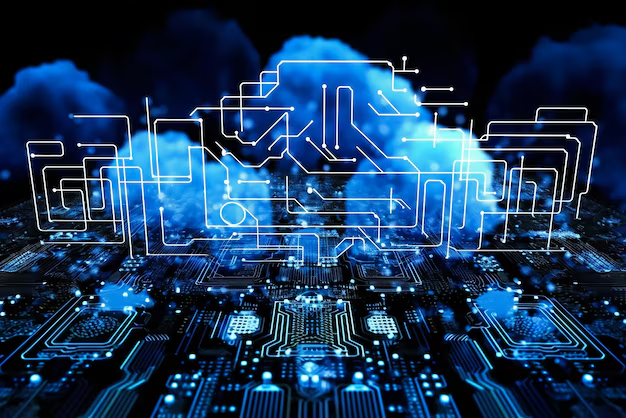Table of Contents
Introduction
As we approach 2025, technological advancements are shaping the future of industries, economies, and daily life. Among these innovations, artificial intelligence (AI), robotics, and cloud computing stand out as the top drivers of change. These technologies are redefining how businesses operate, how we interact with machines, and the capabilities of smart systems. This blog explores which technology will dominate 2025, the future of AI, the evolution of robots, and how AI and robotics are working together to transform the world.
Which Technology is Best in 2025?
In 2025, AI, robotics, and cloud computing will lead the charge in revolutionizing industries. Each has a significant role to play, but artificial intelligence is predicted to have the most widespread impact due to its integration across multiple sectors. AI is driving innovation in healthcare, finance, transportation, and even entertainment, offering automation, improved decision-making, and personalized experiences.
Robotics will continue to evolve, particularly in manufacturing, healthcare, and logistics, where robots are enabling precision, speed, and operational efficiency. Meanwhile, cloud computing will power much of the digital infrastructure, enabling organizations to scale, manage data efficiently, and harness the full potential of AI and robotic systems by offering the computational resources needed for real-time analysis.

What is the Future of AI in 2025?
By 2025, AI will have advanced significantly, with innovations like generative AI and autonomous AI systems becoming mainstream. AI will improve business efficiency, enhance customer experiences, and support better decision-making. Here are key areas where AI will play a crucial role:
- AI-Powered Automation: AI will automate complex processes across industries, reducing costs and increasing productivity. This will impact sectors like manufacturing, retail, and services, where AI can handle repetitive tasks with precision.
- AI in Healthcare: The use of AI in diagnostics, treatment plans, and drug discovery will make healthcare more efficient. AI’s ability to analyze large datasets will enable personalized medicine and faster treatment recommendations.
- AI in Everyday Life: From AI-driven personal assistants to smart homes and cities, AI will be embedded in everyday technologies, making our lives more convenient and interconnected.
- AI Ethics and Governance: With AI becoming more pervasive, discussions around ethical AI and responsible governance will intensify, focusing on preventing bias, ensuring transparency, and safeguarding privacy.
What Will Robots Be Like in 2025?
The evolution of robotics will reach new heights by 2025. Robots will become more intelligent, autonomous, and collaborative, integrating AI capabilities to perform increasingly complex tasks. Here’s what to expect:
- Collaborative Robots (Cobots): Cobots, designed to work alongside humans, will be more advanced and user-friendly, aiding workers in manufacturing, healthcare, and other industries. These robots will assist in tasks that require precision and endurance, improving productivity without replacing human jobs.
- Humanoid Robots: Humanoid robots, which mimic human movements and interactions, will play a more prominent role in customer service, healthcare, and hospitality. Their ability to understand and respond to emotions will improve their acceptance in these sectors.
- Autonomous Drones and Vehicles: Robotics will extend into autonomous transportation, with drones used for deliveries and self-driving vehicles becoming more common. These robots will revolutionize logistics and reduce human involvement in dangerous or monotonous tasks.
- Robotic Surgery and Medical Assistance: Robots in healthcare will perform surgeries with greater precision and assist doctors in procedures. These innovations will make complex medical procedures safer and more accessible.

What is the Future of AI and Robotics?
The future of AI and robotics lies in their convergence. AI-driven robots will become smarter, more adaptable, and capable of learning from their environments, making them indispensable in healthcare, manufacturing, and agriculture. Here are some areas where AI and robotics will make significant strides:
- Smart Factories: Powered by AI and robotics, future factories will operate autonomously with minimal human intervention. Robots will perform tasks such as quality control, assembly, and packaging with AI systems continuously optimizing performance.
- Healthcare Robotics: AI-enabled robots will not only assist in surgeries but also in patient care, rehabilitation, and elderly assistance. These robots will learn from data, adapting their behavior to provide personalized care.
- Autonomous Exploration: AI and robotics will collaborate in space exploration and underwater exploration, where robots will be sent to remote or dangerous environments to collect data and perform tasks without human presence.
- AI-Powered Social Robots: Social robots with advanced AI capabilities will be used in education, therapy, and customer service. These robots will interact naturally with humans, offering companionship, teaching assistance, and mental health support.
Conclusion
By 2025, AI, robotics, and cloud computing will be at the forefront of technological innovation. AI will continue to lead with its ability to revolutionize industries through automation and data analysis. Robots will become more integrated into everyday life, working alongside humans and transforming sectors like healthcare, logistics, and manufacturing. Cloud computing will provide the foundation, ensuring these technologies have the power and scalability to operate effectively. The future holds exciting possibilities as AI and robotics merge, ushering in a new era of automation, intelligence, and human-machine collaboration.